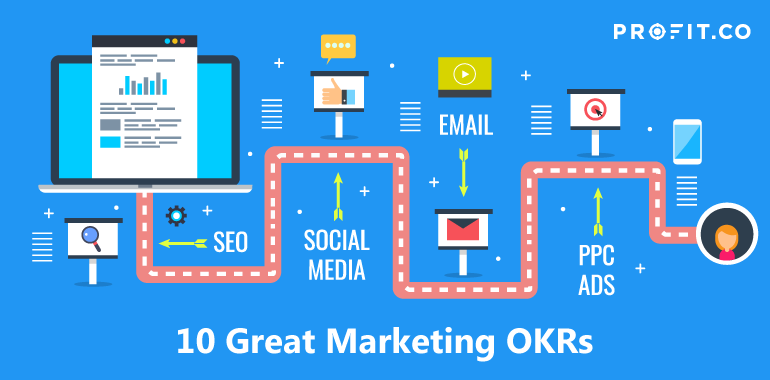Objectives and Key Results, also called OKRs, give your business the insights needed to go forward and expand. To fully understand this dynamic, it helps to define OKRs and show how they are used to fuel business initiatives.
What Are OKRs?
Objectives and Key Results represent collaborative tools that help marketers create specific goals to realize measurable results in all areas of a company. By using OKRs, you can engage employees and monitor your progress when marketing products and services. Use the following examples to create your OKRs.
1. OKRs for Strategic Marketing
Strategic marketing involves developing methods to realize marketing and revenue goals. OKR examples for strategic marketing include lead generation for current and new products and developing planning initiatives for increasing sales.
2. Product Marketing OKRs
Product marketing OKRs are used to support the messages detailing the launch of new products. They may include user-testing, adding distribution channels, and running and monitoring social media ads and campaigns.
3. OKRs for Inbound Marketing
Inbound marketing for OKRs focuses on the leads obtained through inbound marketing activities. The goal, in this case, is to increase website visitors, strengthen the domain rating (DR) score, and set specific goals for reducing the bounce rates on the home page.
4. Content Marketing OKRs
You can also write OKRs to attract weekly newsletter visitors. In this case, you want to write OKRs that set the strategy for creating content, increase customer subscriptions, and support the opening rates for your newsletters.
5. Social Media Marketing (SMM)Examples of OKRs
SMM OKRs can also be used to increase the number of SMM followers. By taking this approach, you can also add to the monthly views and direct your goals to increase the leads you receive monthly via social media.
6. SEO OKR Strategies
Naturally, you cannot write OKRs and overlook SEO. Marketers always seek ways to increase their website’s SEO ranking. In this case, your goal is to achieve a number one spot in the search engine results pages (SERPs) by using specific keywords.
Other objectives might include adding a certain number of referral links to your website or jumping up your domain rating (DR) score through the use of a keyword analysis tool. SEO OKR may extend to adding referral traffic as well.
7. OKRs for Branding Your Products and Services
Writing OKRs involves branding too. You might want to establish goals that include retaining the services of a branding agency or launching branding campaigns that increase viewership. Increasing your media placements may also be a part of your branding strategy.
8. PPC Marketing OKRs
To improve the PPC marketing for your business, you might plan to reduce the amount you pay for PPC leads or test new PPC campaigns so you can monitor the results. You can also create OKRs that will assist you in increasing the conversion rate (CR) for PPC marketing.
9. OKRs that Cover Product and Brand Endorsements
To improve communications in this area, you might plan to release PRs regularly, hold a specific number of webinars per year, or develop a brand book that outlines your brand’s name, its story, and purpose, and the brand’s logo, colors, and images.
10. OKRs that Increase Website Engagement
To increase engagement, your OKR should cover plans to increase the time visitors spend on your website. Objectives should also include the number of pages viewed.













